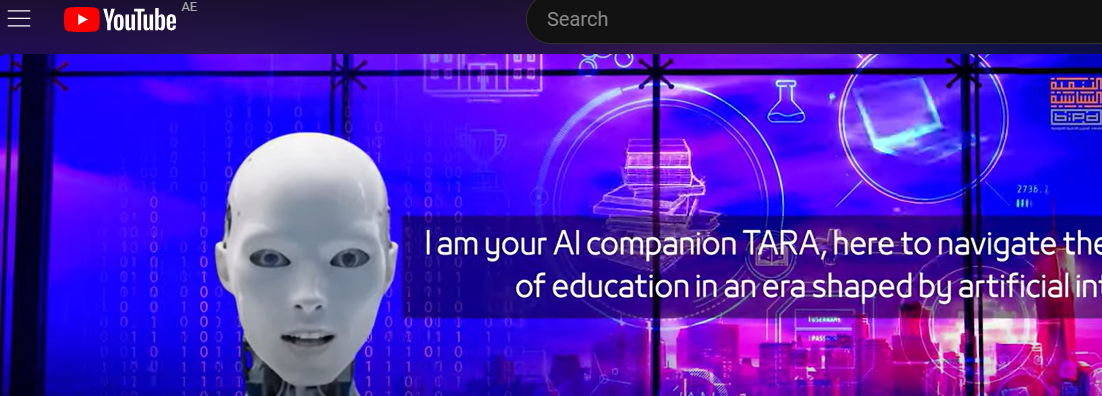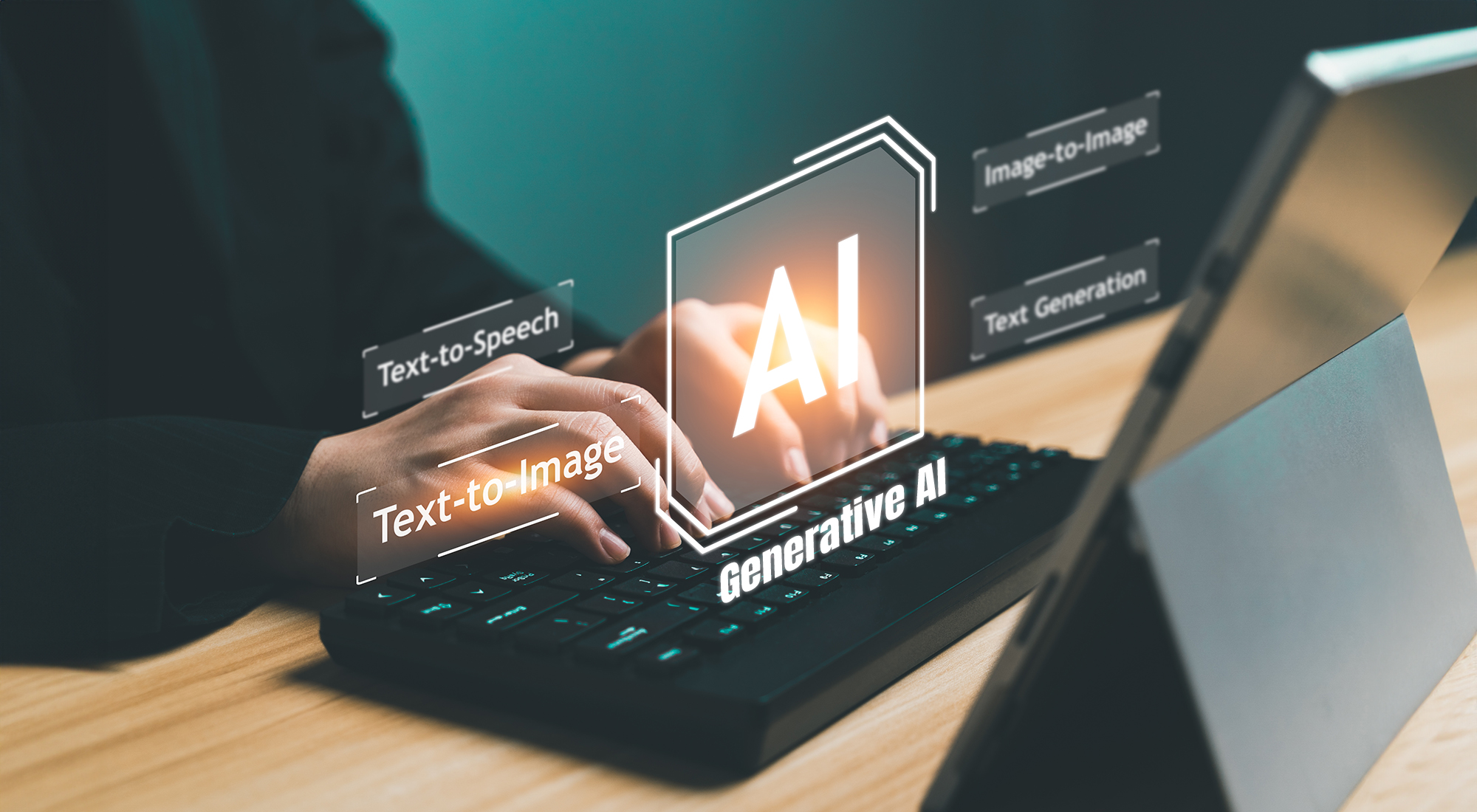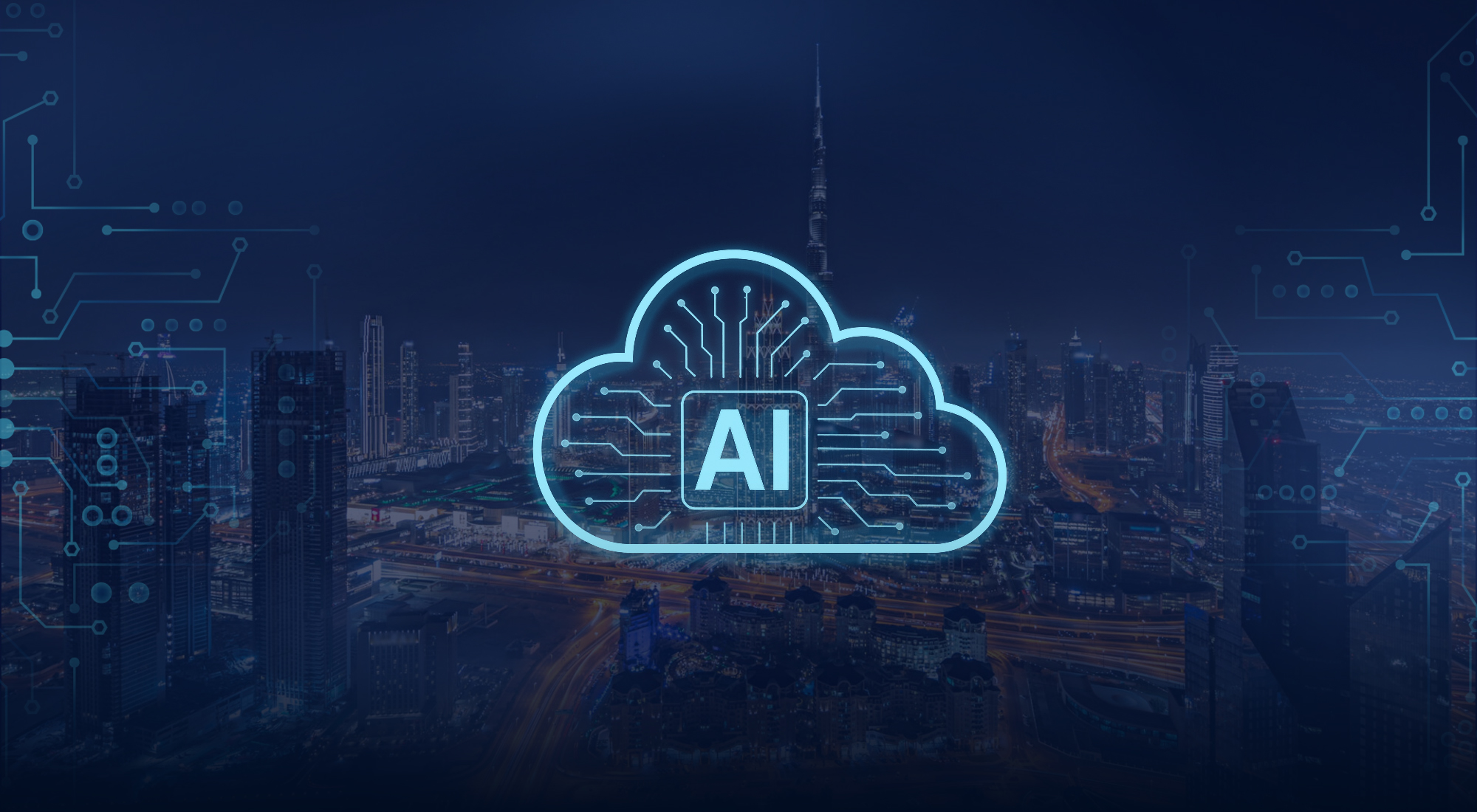Artificial intelligence (AI) has become an integral part of our daily lives, from facial recognition software to self-driving cars. Machine learning, a core component of AI, allows algorithms to learn from data without explicit programming. Generative AI, a subfield of AI, stands apart by focusing on creating entirely new data. Unlike traditional AI, which analyses existing data for problem-solving or predictions, generative AI leverages its understanding of data patterns to create entirely new content. It is revolutionizing content creation with its ability to produce entirely new data across various formats. This technology is rapidly evolving, with experts predicting significant advancements in 2024. [1]
This article explores the potential of generative AI in text, audio, photo, and video generation, showcasing applications in healthcare, education, and more. While acknowledging challenges like bias and explainability, it emphasizes the importance of responsible development to harness generative AI’s benefits. Additionally, it examines limitations in data dependence, adaptability, and true creative capacity, highlighting areas for future research to push the boundaries of this transformative technology.
The Difference Between AI and Generative AI
Though AI and generative AI are intelligent systems, they have distinct purposes. Traditional AI analyses existing data to solve problems or perform tasks such as spam filters and facial recognition. Generative AI, on the other hand, creates entirely new data, like images from text descriptions or creative text formats. Traditional AI operates in a closed loop, using existing information. Generative AI, however, operates in an open loop, learning from data to create entirely new content (text, code, images, and video). [2]
This opens doors for applications in creative industries, scientific research, and product design. [3] While both AI approaches require expertise, advancements make generative AI more accessible to developers and creators. In short, traditional AI analyzes, while generative AI creates, revolutionizing industries and enhancing user experiences.
Table 1: Difference Between Traditional AI and Generative AI
| Feature | Traditional AI | Generative AI |
| Focus | Analyze existing data | Create new data |
| Data Flow | Closed loop (learns from existing data) | Open loop (learns patterns to generate new data) |
| Applications | Problem-solving, predictions, specific tasks | Content creation, design, scientific research |
Building Blocks of Generative AI
Building a generative AI model requires several key elements:
- Large datasets: Generative models require vast amounts of data to learn patterns and create new content effectively.[4]
- Deep learning architectures: Techniques like Generative Adversarial Networks (GANs) or Transformers are often used to train these models.[5]
- Computing power: Training generative models can be computationally intensive, requiring powerful hardware resources like Graphics Processing Units (GPUs).
The Expanding Scope of Generative AI
Generative AI is rapidly evolving beyond single data types. New models can handle a wider range of inputs and outputs, like creating images from text descriptions or translating between creative writing styles. This versatility paves the way for AI assistants to seamlessly integrate various functions, enhancing user experiences across industries.
Significant advancements in Natural Language Processing (NLP) empower generative AI to produce high-quality and controlled text content, from crafting different content styles (news articles, marketing copy) to translating languages more accurately and composing creative text formats (poems, code). [6] NLP advancements unlock possibilities for AI-powered content creation tools and personalized language learning.
Another significant trend is the ability to generate high-fidelity images and videos. Diffusion models like Google’s Lumiere push boundaries, allowing video creation from text descriptions, modifying existing images based on user input, and generating entirely new images with exceptional detail. [7] These advancements hold tremendous potential in media creation, entertainment, and product design.
Previously, generative AI development required significant computational resources and expertise. However, advancements in computing power and user-friendly tools, like Google’s Gemini and OpenAI’s ChatGPT, [6] are democratizing generative AI. This wider accessibility empowers developers and creators to leverage generative AI for their projects, fostering innovation and broader adoption.
Generative AI is also transforming design processes. AI models can now assist with product and graphic design, even generating design options based on user specifications. Additionally, generative AI automates tasks like document processing, marketing content creation, and fraud detection, streamlining workflows and boosting efficiency.
The Power of Generative AI
Generative AI models can produce a surprisingly wide range of outputs, creating entirely new data formats across various categories.
- Text Content: Generative AI models are not limited to just one type of text content. They can write different styles of articles, from informative news pieces to creative blog posts. For creative writing enthusiasts, AI can generate poems with various rhyme schemes and styles, or even create scripts for different mediums like movies or plays.[6] In the marketing world, AI can craft compelling marketing copy like product descriptions, social media captions, or email campaigns tailored to specific audiences. [8] Even developers can benefit from generative AI, as these models can write in different programming languages, potentially generating code snippets or even entire programs based on specific functionalities.
- Visual Content: Generative AI is pushing the boundaries of visual creation. AI can produce high-fidelity photographs indistinguishable from real-world pictures[9], perfect for product mock-ups, advertising visuals, or even artistic endeavors. For artistic expression, generative models can create paintings in various styles, from impressionistic masterpieces to detailed illustrations, catering to a wide range of creative needs. AI acts as a valuable assistant in the design world, generating new product design concepts based on user preferences or trend analysis. This can significantly accelerate the design iteration process, allowing designers to explore a wider range of ideas before settling on a final product.
The image below is created on Dall-E 3 by OpenAI with a prompt “A male researcher writing a research article about generative AI”.
Figure 1: Image created using Generative AI

Source: Dall-E 3 by OpenAI
- Audio Content: Generative AI is revolutionizing the world of sound. From composing music in different genres and styles, AI can create unique soundtracks or even personalized music experiences.[10] This opens doors for everything from film scoring to generating custom playlists based on your mood. However, AI’s auditory talents extend beyond music. It can design realistic sound effects, adding depth and immersion to video games, movies, and other multimedia projects. AI can even generate voiceovers in various languages and tones. This can be used for audiobooks, narrating videos, or creating virtual assistants with diverse and engaging voices. [11]
- Video Content: Generative AI is not limited to static visuals – it is also bringing videos to life. AI can create short video clips based on text descriptions or existing videos, perfect for generating social media content or quick promotional videos.[12] For more complex projects, generative models can create realistic simulations of various scenarios. This has applications in scientific research, training exercises, and even video game development. Finally, AI can produce animations in various styles, from classic 2D cartoons to intricate 3D animations. This opens doors for explainer videos, character animation, and even the creation of full-fledged animated films.
Powering Innovation Across Industries
Generative AI is transforming various sectors by offering innovative solutions that were previously unimaginable. From healthcare to marketing, its ability to generate new and customized content is driving significant advancements. Below are some key industries where generative AI is making a profound impact:
- Healthcare: Medicine is also experiencing a transformative touch from generative AI. AI-powered drug discovery uses generative models to design new molecules with targeted properties.[13] This has the potential to significantly accelerate the development of life-saving medications. Generative AI can also analyze medical data, generate patient reports, and even assist in drug discovery. For example, Generative Adversarial Networks (GANs) can generate synthetic medical images to help train AI models for diagnostics. These models can reduce the workload on healthcare professionals and improve patient care.
- Education: Generative AI is making waves in the education sector, with the potential to personalize learning experiences for every student. Carnegie Mellon University’s project, “Betty’s Brain,” utilizes a generative AI model to create personalized learning experiences for students. Betty can tailor explanations, generate practice problems, and adjust difficulty levels based on the student’s needs, demonstrating generative AI’s potential to personalize education.[14] This demonstrates the exciting potential of generative AI to create a more personalized and effective learning environment for all.
- Real Estate: Generative AI is transforming the real estate landscape, both physical and virtual. It empowers real estate professionals with tools to predict property values, personalize buyer searches, and optimize rental pricing. This transformative technology extends to the Metaverse where generative AI crafts unique landscapes, designs personalized interiors, and generates diverse virtual assets – all based on user preferences or for boosting property value within the Metaverse. This is a game-changer for owners of crypto tokens like MANA, SAND, and Enjin, allowing them to personalize their virtual spaces, create new economic opportunities, and shape the ever-evolving Metaverse landscape.
- Game Development: Generative AI is revolutionizing the world of video games. Imagine exploring game environments so realistic that they blur the line between the digital and real world. Generative AI can create these immersive landscapes, enhancing the visual appeal and truly transporting players into the game. This can make in-game interactions more engaging and memorable. Generative AI can even create procedural content, like quests and side activities, that change with each playthrough. This ensures a fresh experience every time you jump into the game, offering players a wider range of adventures to discover. Companies like NVIDIA are developing generative models that populate game environments with realistic objects and characters, taking the gaming experience to new heights.[9]
- Fashion Design: The fashion industry embraces generative AI for creating new designs and optimizing product development.[15] Companies are using generative models to generate garment variations based on style preferences and market trends, streamlining the design process.
- Marketing Content: Generative AI is transforming marketing by creating personalized and targeted content that resonates with specific audiences. This content is not only more relevant and engaging, but it can also be optimized for different marketing channels like social media, email, and websites.[8] Recognizing this potential, many companies are adopting generative AI tools to create content like product descriptions, social media posts, and even personalized marketing copy. TRENDS Research & Advisory uses generative AI to create marketing videos for their events.
Figure 2: Engaging videos created by Generative AI (Heygen)

Source: TRENDS Research & Advisory
- Autonomous Vehicles: The automotive industry is leveraging generative AI for autonomous vehicles. These models can analyze sensor data from cameras, Light Detection and Ranging (LiDAR), and radar to make real-time decisions, improving safety and navigation.[16] Generative AI is helping self-driving cars perceive their environment and make split-second decisions to avoid accidents.
- Financial Services: Generative AI has found its way into the financial sector as well. These models can analyze market data and generate forecasts, helping traders and investors make informed decisions. Additionally, they can assist in fraud detection by identifying unusual patterns in financial transactions.[17]
Figure 3: Generative AI Use Cases & Applications

Source: Generative AI Use Cases
Ethical and Technical Challenges of Generative AI
Generative AI provides a preview of an upcoming future full of possibilities. However, it is important to acknowledge the challenges that come with this powerful technology.
One key concern is bias and fairness. Generative AI models are only as effective as the data on which they are trained. If the data is biased, the AI will exhibit that bias. [18] Imagine training an AI on images where CEOs are predominantly male. The AI might then primarily generate images of men when asked for a picture of a “CEO.” To prevent this, researchers need to ensure diverse datasets and implement fairness checks throughout the development process.
Another challenge is explainability and transparency. Unlike traditional computer programs, generative AI models can be like black boxes. It is often difficult to understand how they arrive at their outputs. This lack of explainability makes it hard to assess their reliability and identify potential errors. For instance, an AI might generate a seemingly realistic image that contains nonsensical elements because of its complex internal workings. The field of Explainable AI (XAI) is emerging to address this challenge by making generative AI models more transparent and trustworthy. [19]
Data Biases and Knowledge Gaps with Generative AI
While generative AI can produce impressive outputs, it is important to remember that this technology is still in its early stages. One key limitation is its creativity. Generative AI excels at remixing existing ideas or creating variations based on established patterns. However, true creative leaps and groundbreaking innovation remain largely in the human domain. These models might struggle with tasks that require genuine innovation or understanding of the subtleties of human emotions and experiences.
Generative AI also faces challenges when it comes to complex contexts. Sometimes, the models struggle to grasp the deeper meaning behind text, the emotional tone of communication, or the cultural context surrounding an image. This can lead to factually accurate outputs but miss the mark in terms of overall appropriateness. Imagine an AI-generated news report that accurately details an event but uses an inappropriately light-hearted tone.
Another limitation is the model’s dependence on data. Generative AI models are heavily reliant on the information they are trained on. The quality and quantity of this data directly affect the quality and diversity of the outputs. If the training data is biased or limited, the generated content will reflect those limitations. Additionally, creating and managing these massive datasets requires significant resources. [18]
Finally, generative AI models often struggle to adapt to new situations. They excel at tasks they are specifically trained for, but applying them to entirely new scenarios or generalizing their capabilities across different contexts can be difficult. This limits their flexibility and often requires retraining for each new application.
Despite these limitations, generative AI research is constantly progressing. As the field advances, we can expect models with a better grasp of complex concepts, improved adaptability, and a greater capacity for true creative exploration.
Potential Risks and the Dark Side of Generative AI
Generative AI, for all its potential benefits, also carries significant risks that demand our attention. One major concern is the creation of deepfakes and the spread of misinformation/disinformation. Generative AI can be misused to create highly realistic manipulated videos or audio recordings of people saying or doing things they never did. These deepfakes can be incredibly convincing and used to damage reputations, sow discord, or manipulate public opinion. [20]
Generative AI models are often trained on massive datasets that may contain personal information. This raises concerns about data privacy and the potential misuse of this information. Additionally, AI-generated content itself could be used to identify or track individuals. [21]
Security vulnerabilities are another risk factor. Generative AI models can be susceptible to hacking or manipulation. Malicious actors could exploit these vulnerabilities to generate harmful content or disrupt the models’ functionality entirely.
Finally, generative AI raises concerns about job displacement. As AI automates tasks currently performed by humans, some jobs may be lost. While generative AI might create new job opportunities, it is crucial to consider the impact on existing workforces and ensure proper retraining and adaptation.
These risks highlight the importance of responsible development and deployment of generative AI. Robust security measures, strong ethical guidelines, and human oversight are essential to mitigate these dangers and ensure this technology is used for good.
The Way Forward
Generative AI is rapidly transforming content creation and industries. Future advancements include models seamlessly handling complex data types (text, audio, video). Explainable AI (XAI) will increase trust and adoption with its transparency. User-friendly tools will democratize generative AI, empowering creators and developers.
Humans and AI will collaborate, with AI assisting in brainstorming, content generation, and design iteration. Ethical considerations remain paramount, with researchers employing diverse datasets and fairness checks to mitigate bias. Robust security measures and open discussions are crucial to prevent misuse and establish responsible development guidelines.
Generative AI might automate some tasks, but new opportunities will emerge in model development, oversight, and human-AI collaboration. Reskilling initiatives will prepare the workforce for this future of human-AI collaboration. By fostering responsible development, prioritizing human-AI collaboration, and addressing ethical concerns, generative AI has the potential to revolutionize how we create and interact with the world.
Generative AI models are often trained on massive datasets that may contain personal information. This raises concerns about data privacy and the potential misuse of this information. Additionally, AI-generated content itself could be used to identify or track individuals. [21]Bibliography
[1]J. Goldstein, “New IBM study reveals how AI is changing work and what HR leaders should do about it,” 14 August 2023. [Online]. Available: https://www.ibm.com/blog/new-ibm-study-reveals-how-ai-is-changing-work-and-what-hr-leaders-should-do-about-it/.
[2]B. Marr, “The Difference Between Generative AI And Traditional AI: An Easy Explanation For Anyone,” 24 July 2023. [Online]. Available: https://www.forbes.com/sites/bernardmarr/2023/07/24/the-difference-between-generative-ai-and-traditional-ai-an-easy-explanation-for-anyone/?sh=1bc7db12508a.
[3]R. Cairns, “‘Video games are in for quite a trip’: How generative AI could radically reshape gaming,” 23 October 2023. [Online]. Available: https://edition.cnn.com/world/generative-ai-video-games-spc-intl-hnk/index.html.
[4]N. Kumar, “How to build a generative AI solution – from prototyping to production,” 01 March 2024. [Online]. Available: https://binmile.com/blog/how-to-build-a-generative-ai-solution/.
[5]ScaleupAlly, “How to build a generative AI Model,” 28 January 2024. [Online]. Available: https://scaleupally.io/blog/how-to-build-generative-ai/.
[6]OpenAI, “Introducing ChatGPT,” 30 November 2022. [Online]. Available: https://openai.com/index/chatgpt/.
[7]E. David, “Google’s Lumiere brings AI video closer to real than unreal,” 27 January 2024. [Online]. Available: https://www.theverge.com/2024/1/27/24052140/google-lumiere-ai-video-generation-runway-pika.
[8]Salesforce, “5 Ways AI is Transforming Marketing,” 10 february 2024. [Online]. Available: https://www.salesforce.com/ap/resources/articles/marketing-ai/.
[9]NVIDIA, “Generative AI: Creating Realistic Images with Artificial Intelligence,” 19 January 2023. [Online]. Available: https://www.nvidia.com/en-us/ai-data-science/generative-ai/.
[10]S. Lynch, “A Composer’s Helper: Using AI to Create New Harmonies,” 4 December 2023. [Online]. Available: https://hai.stanford.edu/news/composers-helper-using-ai-create-new-harmonies
[11]IBM Research, “Generative AI for Voiceovers: Creating Engaging and Diverse Voices. IBM Research,” 17 May 2023. [Online]. Available: https://www.ibm.com/thought-leadership/institute-business-value/en-us/technology/generative-ai.
[12]HeyGen, “Generative AI video creation platform,” [Online]. Available: https://www.heygen.com/.
[13]S. L. F. M. G. P. D. L. R. J. Q. N. J. T. a. H. W. Robert J. Young, “The Time and Place for Nature in Drug Discovery,” American Chemical Society, 2022.
[14]MIT Technology Review Insightsarchive page, “The great acceleration: CIO perspectives on generative AI,” 18 July 2023. [Online]. Available: https://www.technologyreview.com/2023/07/18/1076423/the-great-acceleration-cio-perspectives-on-generative-ai/.
[15]M. Taylor, “How Generative AI is Revolutionizing the Fashion Industry,” 16 April 2024. [Online]. Available: https://akool.com/blog-posts/ai-in-fashion#:~:text=Designers%20and%20fashion%20houses%20are,journey%20through%20personalized%20shopping%20experiences.
[16]N. Marks, “CaLLM, Cool and Connected: Cerence Uses Generative AI to Transform the In-Car Experience,” 14 May 2024. [Online]. Available: https://blogs.nvidia.com/blog/cerence-generative-ai-in-car-experience/#:~:text=Generative%20AI%20a%20Game%2DChanger,drivers%20interact%20with%20their%20cars.
[17]McKinsey Direct, “Generative AI in finance: Finding the way to faster, deeper insights,” 16 February 2024. [Online]. Available: https://www.mckinsey.com/capabilities/operations/our-insights/generative-ai-in-finance-finding-the-way-to-faster-deeper-insights.
[18]N. T. Lee, P. Resnick and G. Barton, “Algorithmic bias detection and mitigation: Best practices and policies to reduce consumer harms,” 22 May 2019. [Online]. Available https://www.brookings.edu/articles/algorithmic-bias-detection-and-mitigation-best-practices-and-policies-to-reduce-consumer-harms/.
[19]V. C. A. M. A. S. D. G. K. H. S. S. I. S. M. M. &. A. H. Vikas Hassija, “https://link.springer.com/article/10.1007/s12559-023-10179-8,” 24 August 2023. [Online]. Available: https://link.springer.com/article/10.1007/s12559-023-10179-8.
[20]D. RAO, “The deepfake war is about to play out,” 10 October 2023. [Online]. Available: https://www.theatlantic.com/sponsored/adobe-2023/the-deepfake-war-is-about-to-play-out-on-the-elect/3836/.
[21]A. Baig, “Navigating Generative AI Privacy : Challenges & Safeguarding Tips,” 21 September 2023. [Online]. Available: https://securiti.ai/generative-ai-privacy/.









